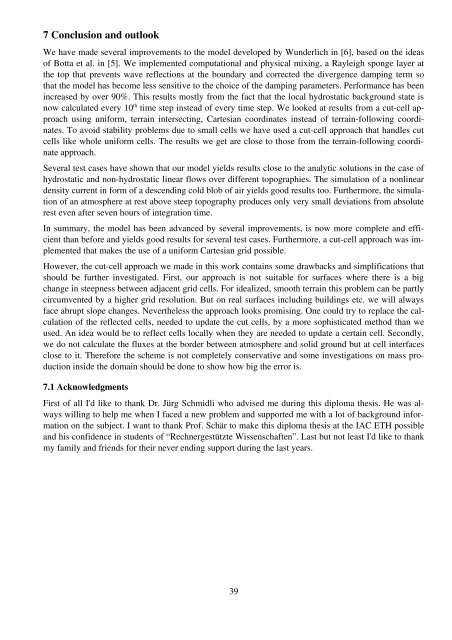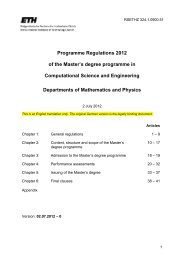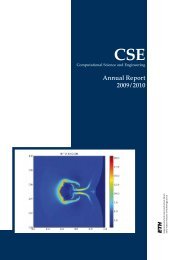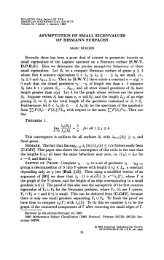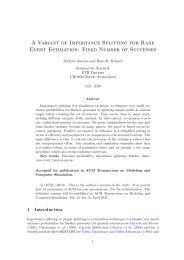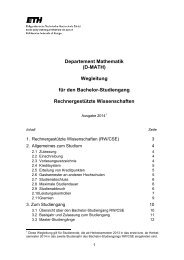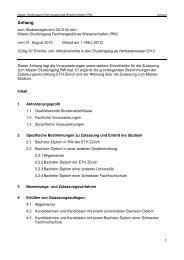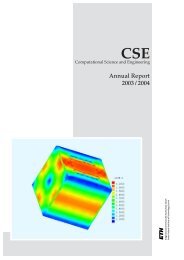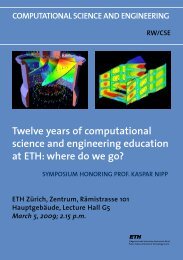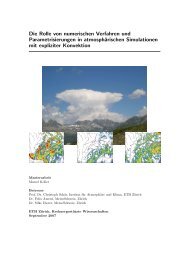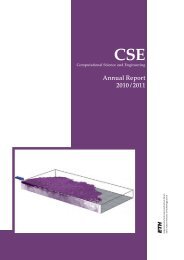A 2D Finite Volume Non-hydrostatic Atmospheric Model ...
A 2D Finite Volume Non-hydrostatic Atmospheric Model ...
A 2D Finite Volume Non-hydrostatic Atmospheric Model ...
Create successful ePaper yourself
Turn your PDF publications into a flip-book with our unique Google optimized e-Paper software.
7 Conclusion and outlookWe have made several improvements to the model developed by Wunderlich in [6], based on the ideasof Botta et al. in [5]. We implemented computational and physical mixing, a Rayleigh sponge layer atthe top that prevents wave reflections at the boundary and corrected the divergence damping term sothat the model has become less sensitive to the choice of the damping parameters. Performance has beenincreased by over 90%. This results mostly from the fact that the local <strong>hydrostatic</strong> background state isnow calculated every 10 th time step instead of every time step. We looked at results from a cut-cell approachusing uniform, terrain intersecting, Cartesian coordinates instead of terrain-following coordinates.To avoid stability problems due to small cells we have used a cut-cell approach that handles cutcells like whole uniform cells. The results we get are close to those from the terrain-following coordinateapproach.Several test cases have shown that our model yields results close to the analytic solutions in the case of<strong>hydrostatic</strong> and non-<strong>hydrostatic</strong> linear flows over different topographies. The simulation of a nonlineardensity current in form of a descending cold blob of air yields good results too. Furthermore, the simulationof an atmosphere at rest above steep topography produces only very small deviations from absoluterest even after seven hours of integration time.In summary, the model has been advanced by several improvements, is now more complete and efficientthan before and yields good results for several test cases. Furthermore, a cut-cell approach was implementedthat makes the use of a uniform Cartesian grid possible.However, the cut-cell approach we made in this work contains some drawbacks and simplifications thatshould be further investigated. First, our approach is not suitable for surfaces where there is a bigchange in steepness between adjacent grid cells. For idealized, smooth terrain this problem can be partlycircumvented by a higher grid resolution. But on real surfaces including buildings etc. we will alwaysface abrupt slope changes. Nevertheless the approach looks promising. One could try to replace the calculationof the reflected cells, needed to update the cut cells, by a more sophisticated method than weused. An idea would be to reflect cells locally when they are needed to update a certain cell. Secondly,we do not calculate the fluxes at the border between atmosphere and solid ground but at cell interfacesclose to it. Therefore the scheme is not completely conservative and some investigations on mass productioninside the domain should be done to show how big the error is.7.1 AcknowledgmentsFirst of all I'd like to thank Dr. Jürg Schmidli who advised me during this diploma thesis. He was alwayswilling to help me when I faced a new problem and supported me with a lot of background informationon the subject. I want to thank Prof. Schär to make this diploma thesis at the IAC ETH possibleand his confidence in students of “Rechnergestützte Wissenschaften”. Last but not least I'd like to thankmy family and friends for their never ending support during the last years.39


